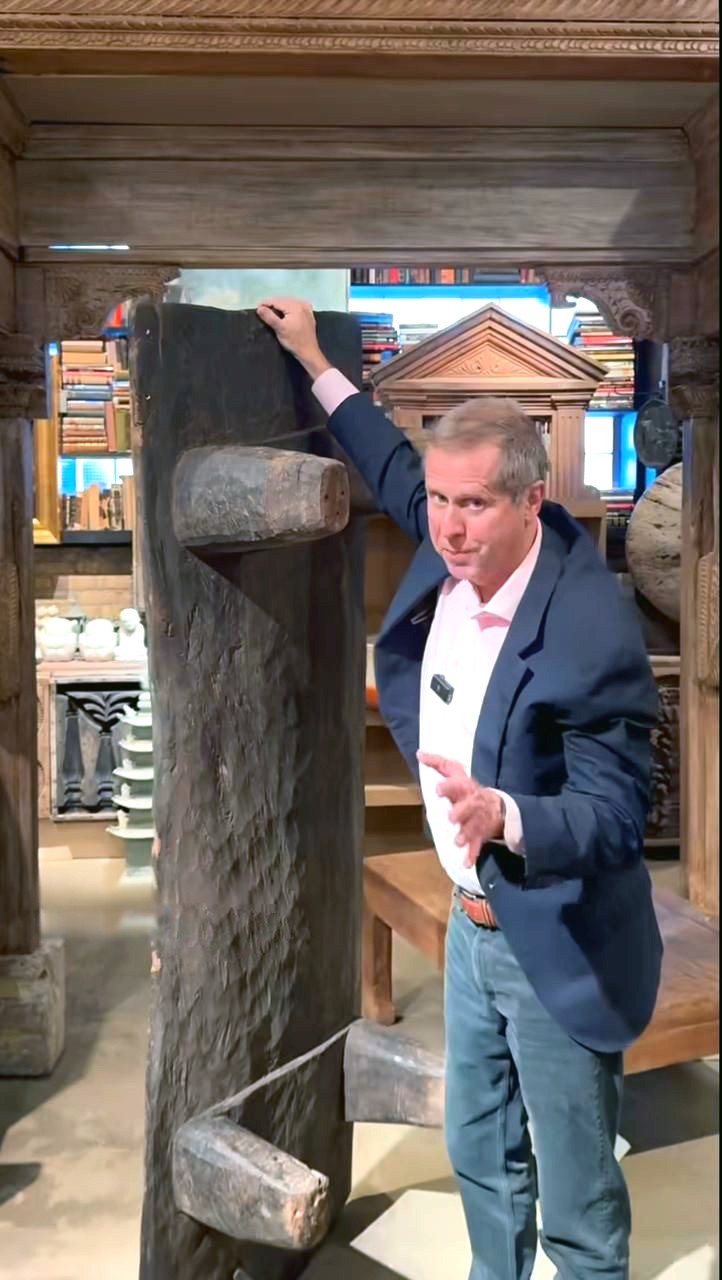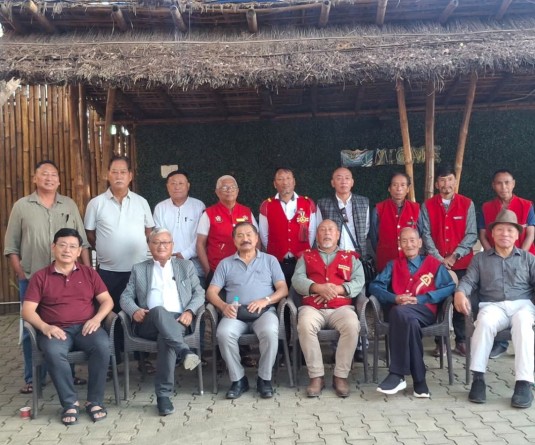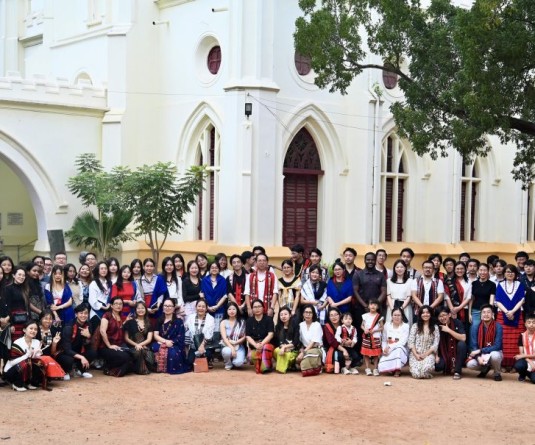A 125-year-old wooden Naga bed displayed at the Golden Triangle gallery in Chicago, where its appearance has sparked questions about the export and sale of heritage objects from Nagaland.

Questions raised over legality and cultural loss
Morung Express News
Dimapur | November 17
A 125-year-old wooden bed frame, reportedly carved from a single tree trunk in Nagaland, has surfaced at a gallery in Chicago, prompting questions about how the century-old artefact made its way from a remote North East Indian state to the United States.
The bed appears in an Instagram reel posted by Golden Triangle (the golden triangle chicago) captioned ‘125-year-old Naga bed,’ which describes it as an “authentic Naga bed” carved out of a single massive log. While the gallery does not list the bed’s price on its website, it offers other Naga wooden panels (C.1960) for USD 5,800 and USD 6,800, amounts equivalent to approximately Rs 5.1 lakh and Rs 6 lakh at current exchange rates. Vintage brass Naga gauntlets (Circa 1930), hand carved wooden figurine and hand carved food trays, bowls are also part of its catalogue.
The Chicago listing is not an isolated instance. Similar Naga artefacts appear on several international and Indian online auction and marketplaces. Websites such as Whoppah and 1st Dibs feature listings described as Hand-carved Naga bed made of whole wood, 17th–18th century hand-carved Naga bed/bench, Naga mortar grinding table to name a few. On Puranadarwaza.com, which specialises in South Asian antiques, Naga wooden furniture and ritual-inspired pieces are also being sold.
These listings indicate that multiple heritage objects from Nagaland, many of them vintage or older than a century, have travelled overseas and entered the global antiques market.
How the ‘Bed’ left Nagaland
How the 125-year-old bed reached Chicago remains unclear. Traditional Naga artefacts have historically travelled abroad through a variety of channels- private collectors, missionaries, researchers and antique dealers active during periods when export regulation and documentation were less rigorous. Some items may have left India decades ago, before the enforcement of modern heritage laws. Golden Triangle Chicago has not disclosed details about the circumstances under which it was acquired.
Legal framework
Under India’s Antiquities and Art Treasures Act, 1972, any object over 100 years old that demonstrates traditional craftsmanship may be defined as an “antiquity.” Exporting such items requires a permit from the Archaeological Survey of India (ASI), and commercial sale within India is limited to licensed antiquities dealers.
Items removed from the country without proper clearances risk being treated as unlawful exports under customs and heritage-protection laws. Provenance and documentation are typically needed to establish the legality of movement.
It is not known whether the Naga bed at the Chicago gallery was exported with a valid ASI permit or whether it left India before the Act came into force. International listings for similar Naga items also do not specify their export documentation.
Concerns over cultural loss
Cultural observers in Nagaland note that the sale of such indigenous artefacts abroad represents more than just the movement of old furniture as they carry historical, social and artistic value. And once removed from their place of origin, these objects become difficult to trace, study or preserve. Their absence is regarded as a loss for the state, both culturally and economically.
Older Naga wooden artefacts, especially those carved from single tree trunks or used in early village life are increasingly rare even within Nagaland. When such items appear in international markets, it reduces the pool of heritage materials available for local museums, research institutions and cultural conservation efforts.
Observers argue that the commercialisation of these objects abroad also means that any financial value they generate benefits foreign dealers and collectors rather than local artisans, cultural organisations or the state’s heritage economy.
Dr Aokumla Walling, Assistant Professor at the Department of History and Archaeology, Nagaland University, said the problem of antiquity trafficking “has been there and will go on,” but emphasised the need for education and awareness.
“Selling such antique items is like selling one’s heritage,” she said, adding that communities should adopt preventive measures rather than punitive ones. “Each village should create a documentation committee on the heirlooms they have-not seizing it from the owners but documenting what they have. In that way we will indirectly create awareness and value.”
She suggested establishing village-level and district-level museums, in addition to supporting the State Museum in Kohima with adequate resources. “Proper resources to run them should be given, and for that the government should take the initiative,” she added. Dr Walling also remarked that “almost all of us are involved in antiquity trafficking-individuals, communities as well as those in the high rung.”
Cultural researchers note that as heirlooms leave the state, Nagaland loses not only physical artifacts but also a tangible link to its social history, craftsmanship and collective memory. Besides, the state may be losing irreplaceable cultural material to unrecorded migration of artefacts.





